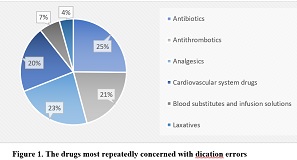Blood Pressure and anthropometry obesity indices in first professional medical students at a private medical college of Pakistan-a cross-sectional study
Blood Pressure and anthropometry obesity indices

Downloads
Obesity, a significant public health issue, requires immediate attention to prevent obesity-mediated health concerns such as hypertension, metabolic syndrome, and adverse coronary and circulatory events. The present study aimed to determine blood pressure (BP) and anthropometric obesity indices (including BMI, waist circumference, waist-to-hip ratio, and mid-upper arm circumference) of 1st Professional MBBS students in a private medical college in Pakistan, and also to find the association of BP with anthropometric indices. It was a cross-sectional survey conducted at Lahore Medical and Dental College. Institutional Review Board approval was acquired before the study commencement. The duration of the study was from May to August 2022. The study population included all students registered in first-year MBBS who agreed to participate in the study. The present study included 120 participants. The mean ± standard deviation (SD) age of participants was 19.05±0.82 years. Mean systolic and diastolic BP was 116.05±13.21 and 74.85±9.81 respectively. Sixty-seven (56%) participants were having their BP ≥ 120/80 and were identified as pre-hypertensive or hypertensive respectively. Mean ± SD BMI was 22.18±4.31 kg/m2; 67 (55.8%) were having normal BMI, 20(16.7%) were overweight and 33 (27.5%) obese. On the basis of waist circumference; 39 (70.9%) male subjects were normal and 16 (29.1%) centrally obese, whereas 47 (72.3%) females were normal and 18 (23.7%) obese. Overall central obese subjects were 35 (29%). Logistic regression analysis was applied; hypertension was taken as a dependent variable and all-other independent covariates such as anthropometry indices (BMI, waist circumference), gender, age, and residential status were controlled; association of hypertension was significant with gender (p=0.001) and waist circumference (p=0.000). Students need to modify lifestyle strategies for preventing obesity and hypertension.
Copyright (c) 2023 Uzma Zafar, Muhammad Usman Ul Haque, Faiqa Jabeen Naeem, Musfirah Sufyan, Muhammad Usman Naeem

This work is licensed under a Creative Commons Attribution-ShareAlike 4.0 International License.
- The journal allows the author to hold the copyright of the article without restrictions.
- The journal allows the author(s) to retain publishing rights without restrictions.
- The legal formal aspect of journal publication accessibility refers to Creative Commons Attribution Share-Alike (CC BY-SA).
- The Creative Commons Attribution Share-Alike (CC BY-SA) license allows re-distribution and re-use of a licensed work on the conditions that the creator is appropriately credited and that any derivative work is made available under "the same, similar or a compatible license”. Other than the conditions mentioned above, the editorial board is not responsible for copyright violation.






























